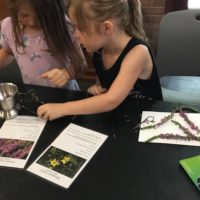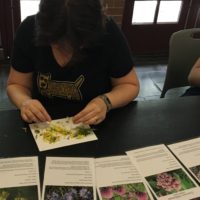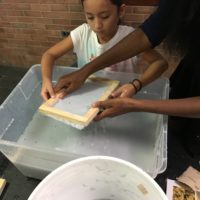Paper and Pigment Workshops Illustrate the Importance of Plants

To make pigments, participants used petals from flowers from Freshkills Park.
This summer, Freshkills Park offered creative workshops about plants at the Greenbelt Nature Center. Using art as a platform, these workshops engaged families and individuals in learning about the relationships between native plants, invasive plants, pollinators, and food plants. The series of two pigment workshops and two plantable paper workshops were open to participants of all ages.
Plantable Paper
At the plantable paper workshops, participants created recycled paper that was embedded with a mix of local seeds. The paper was made by first blending a mixture of water and ground paper pieces to create a pulp. After mixing the pulp with a native seed mix, participants dipped a mold into this mixture to shape the pulp into a sheet. Once dry, these unique pages can be used as paper, and can be planted after their use. These native plants support native pollinators, which in turn support local food plants such as tomatoes, cucumbers, and eggplant.
Plant Pigments
At the pigment workshops, participants learned to make watercolor paints out of different parts of native and invasive plants. Participants ground up the petals, or leaves, of different plants collected at Freshkills Park and combined them with gum Arabic, water, and honey to create a slurry. This was then strained and either used immediately or allowed to dry. Participants also created field notebooks with paper made out of Phragmites, part of Susan Mills’ art project UnCommon Pages. Participants also painted pictures in their notebooks using the paints that they created!
These programs were made possible through funding from the National Environmental Education Foundation (NEEF), and through the donation of paper-making supplies from Arnold Grummer’s.









